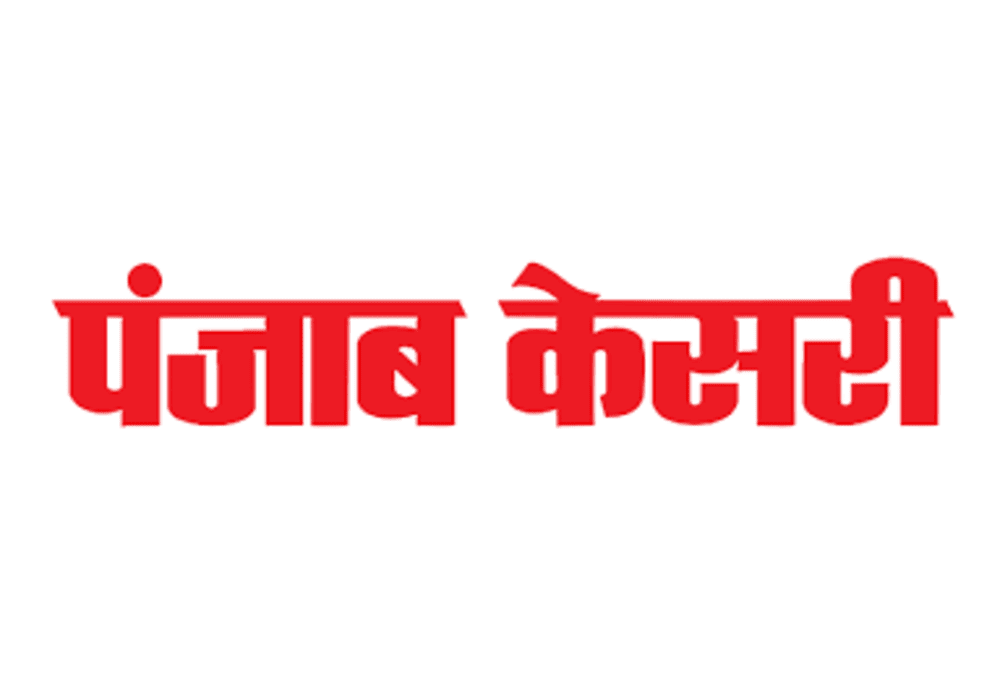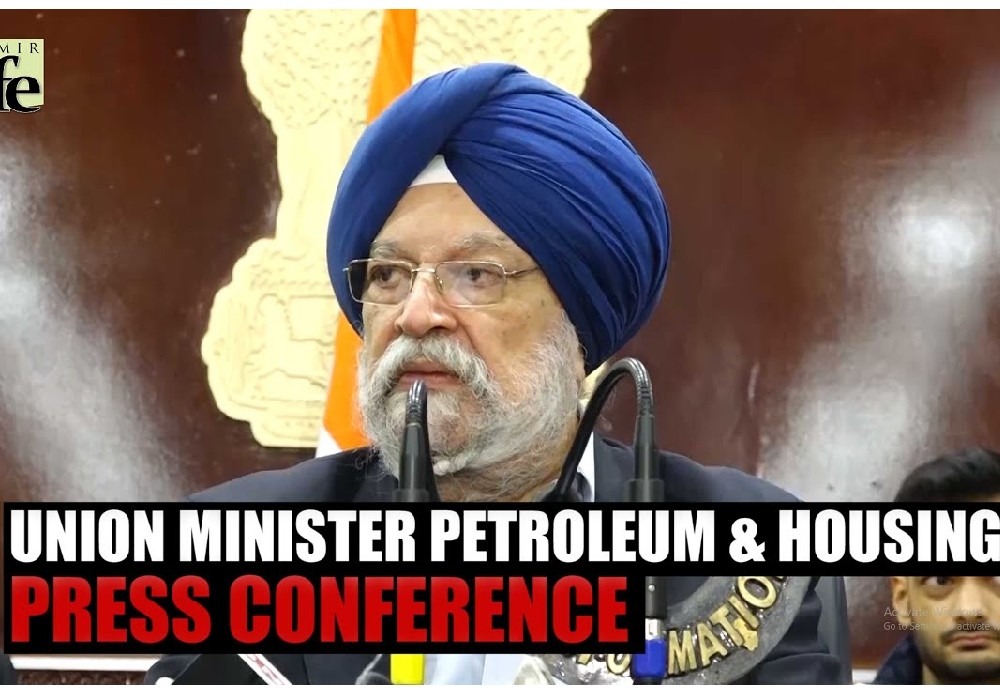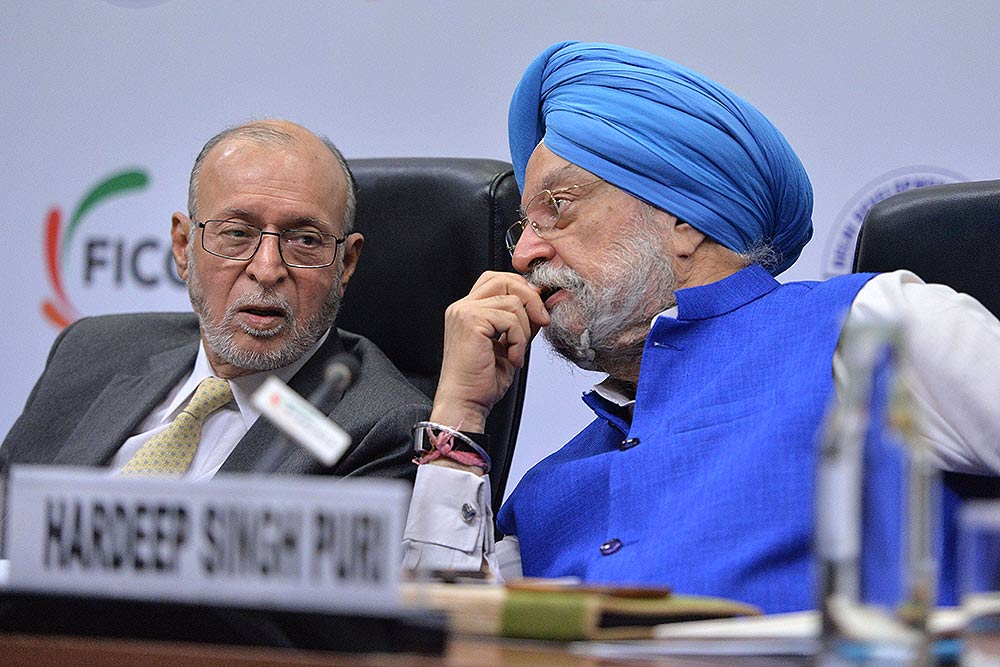Hon’ble Prime Minister Shri Narendra Modi today launched the second phases of SWACHH BHARAT MISSION-URBAN (SBM-U) and ATAL MISSION FOR REJUVENATION AND URBAN TRANSFORMATION (AMRUT) in New Delhi. Union Minister of Jal Shakti Shri Gajendra Singh Shekhawat, Union Minister of Housing and Urban Affairs & Petroleum and Natural Gas Shri Hardeep Singh Puri, Minister of State for Housing and Urban Affairs Shri Kaushal Kishore and Minister of State for Jal shakti, Shri Bishwesar Tudu.
Prime Minister in his independence speech on 15th August, 2021 from the ramparts of Red Fort had said “We now have to move ahead with the goal of achieving saturation of schemes, and, for this, we do not have to keep a distant deadline”. In pursuance of the Prime Minister’s vision, the schemes, with an outlay of about ₹ 4.4 Lakh Crore, will adopt ‘Universal Approach’ and make a move towards ‘Saturation’ in sanitation and water availability in all Urban Local Bodies (ULBs).
SWACHH BHARAT MISSION-URBAN 2.0
The announcement for the launch of SBM was made by Hon’ble Prime Minister on 15th August 2014, with the Mission being formally launched on 2nd October 2014. The objectives of the Mission were-Eradication of open defecation in all statutory towns; 100% scientific management of municipal solid waste in all statutory towns; and effecting behaviour change through Jan Andolan.
Over the last seven years, the Mission has reached all corners of the country and has changed the lives of countless citizens with its ‘people first’ focus. The Mission revolutionized the sanitation space in urban India, by providing 100% access to sanitation facilities in urban India. Under it, over 70 lakh households, community and public toilets have been built, thus providing safe and dignified sanitation solutions for all. The Mission has prioritized the needs of women, transgender communities, and persons with disabilities (Divyangs).
The Mission provided access to sanitation facilities which have been improved further through digital innovation such as SBM Toilets on Google Maps where over 65,000 public toilets across 3,300+ cities have been made live. Urban India was declared open defecation free in 2019 following which the Mission has propelled urban India on the path of sustainable sanitation, with over 3,000 cities and over 950 cities being certified ODF+ and ODF++ respectively. Cities are progressing towards Water+ certification under the Water+ Protocol which focuses on treatment of wastewater and its optimum reuse.
In the area of scientific waste management, waste processing in India has gone up over four times from 18% in 2014 to 70% today. This has been aided through 100% door-to-door waste collection in 97% wards and source segregation of waste being practised by citizens across 85% wards.
The Mission has been able to bring about a marked difference in the lives of sanitation workers and informal waste workers with over 5.5 lakh sanitation workerslinked to social welfare schemes. The uninterrupted services by frontline sanitation workers played a key role in ensuring the safety of urban India during Covid-19 pandemic. The active participation of 20 crore citizens (comprising over 50% of India’s urban population) in the program has successfully transformed the Mission into a people’s movement, a true Jan Andolanthrough massive IEC and behaviour change campaigns.
Digital enablements such as Swachhata App, the digital grievance redressal platform introduced by MoHUA in 2016, has reinvented the way in which citizen grievance redressal is managed. The App has resolved over 2 crore citizen complaints till date with active engagement from citizens. MoHUA has recently launched the revamped version of Swachhata App 2.0.
Swachh Survekshan,the world’s largest urban cleanliness survey covering over 4,000 Urban Local Bodies was initiated under SBM-Urban in 2016. The Survekshan framework has evolved with the years and has today become a unique management tool that accelerates ground level implementation to achieve sanitation outcomes. Swachh Survekshan 2021 was conducted in record time despite the on-ground challenges posed by the pandemic. Over the years, the survey has received over 7 crore citizen feedback cumulatively. Continuous capacity building of state and city level officials was undertaken, with over 10 lakh municipal officials and staff trained on various Mission components.
Now, taking a big leap from the SBM-U’s accomplishments, the focus of SBM-U 2.0 in the next 5 years will be on sustaining the sanitation and solid waste management outcomes achieved and accelerate the momentum generated, thus taking Urban India to the next level of ‘Swachhata’. Following will be the key components for implementation under SBM-U 2.0
The Mission will focus on ensuring complete access to sanitation facilities to serve additional population migrating from rural to urban areas in search of employment and better opportunities over the next 5 years. This will be done through the construction of over 3.5 lakhs individual, community and public toilets. Complete liquid waste management in cities in less than 1 lakh population – a new component introduced under SBM-Urban 2.0 will ensure that all wastewater is safely contained, collected, transported and treated so that no wastewater pollutes our water bodies.
Under the Sustainable Solid Waste Management, greater emphasis will be on source segregation. Material Recovery Facilities, and waste processing facilities will be set up, with a focus on phasing out single use plastic. Construction & demolition waste processing facilitieswill be set upand mechanical sweepers deployedin National Clean Air Programme cities and in cities with more than 5 lakh population. Remediation of all legacy dumpsites will be another key component of the Mission.
It is expected that under Swachh Bharat Mission-Urban 2.0, all statutory towns will become at least ODF+; and all cities with <1 lakh population ODF++. Systems and processes will be in place so that all waste water is safely treated and optimally reused and no untreated wastewater pollutes water bodies.
Regarding the Solid Waste Management, it is expected that all cities will achieve at least 3-star Garbage Free certification under SBM-U 2.0.
Special focus will be put on the well-being on sanitation and informal waste workers, through provision of personal protective equipment and safety kits, linkages with government welfare schemes along with their capacity building.
A financial outlay of ₹1,41,600 crores has been finalized for SBM-U 2.0, including central share of ₹36,465 for the period 2021-22 to 2025-26which is over 2.5 times the financial outlay of ₹62,009 crores in the last phase of the Mission.
AMRUT 2.0
AMRUT was launched as the first water – focused Mission in 2015, with a total Mission outlay of ₹1,00,000 crore. The Mission caters to 500 major cities covering 60% of the urban population. Projects worth more than ₹80,000 crore have been grounded and more than funds allocated for project implementation worth ₹77,640 crore. Work worth ₹56,000 crore has been carried out and ₹48,000 crore expanded.
Under the Mission, 1.14 crore water tap connections have been provided taking total connections to 4.14 crore in AMRUT cities. 85 lakh sewer connections including households covered under septage facilities have been provided taking coverage to 2.32 crore. 6,000 MLD of Sewage Treatment capacity is to be developed through AMRUT, of which 1,800 MLD of treatment capacity has been developed. Further, 907 MLD capacity is created for recycle/reuse of treated used water.
Through green spaces projects, 3,850 acre of permeable green spaces have been added and another 1,600 acre of green area will be added. 2,200 water logging points have been eliminated & another 1,500 water logging points through ongoing projects will be eliminated. Rejuvenation of 106 water bodies has been taken up.
The Mission has also made tremendous progress under its component of reforms. Credit rating work has been completed in 470 cities. Of which, 164 cities have received Investible Grade Rating (IGR), including 36 cities with rating of A- or above. ₹3,840 crore has been raised through municipal bonds by 10 ULBs namely Ahmedabad, Amravati, Bhopal, Ghaziabad, Hyderabad, Indore, Pune, Surat, Visakhapatnam & Lucknow. ₹227 crore have been released as incentive to these ULBs. Online Building Permission System has been implemented in 2,471 cities including 455 AMRUT cities. This reform has helped improve India’s rank in Ease of Doing Business in construction permits to 27 in Doing Business Report (DBR) 2020 of World Bank from 181 in 2018. 89 lakh conventional streetlights have been replaced with energy efficient LED lights, leading to estimated energy savings of 195 crore units per annum & reduction in CO2 emission by 15.6 lakh tons per annum.
Now, taking the transformations further, AMRUT2.0 aims to make around 4,700 towns / cities ‘water secure’. It will build upon the progress of AMRUT to address water needs, rejuvenate water bodies, better manage aquifers, reuse treated wastewater, thereby promoting circular economy of water. The total outlay of AMRUT 2.0 is ₹2,97,000 crores, including central share of ₹76,760 crores. This includes ₹10,000 crores Central share and another ₹10,000 crores states’ share for continuing financial support to AMRUT Mission up to March 2023.
The Objective of AMRUT 2.0 is to provide100% coverage of water supply to all households in around 4,700 ULBs, by providing 2.68 crore urban household tap connections, thereby benefitting around 10.7 crores people. It will provide 100% coverage of sewerage and septage in 500 AMRUT cities, by providing 2.64 crore sewer connections/ septage connections, thereby benefitting around 10.6 crores people. Rejuvenation of water bodies and urban aquifer management will be undertaken to augment sustainable fresh water supply. Recycle and reuse of treated wastewater is expected to cater to 20% of total water needs of the cities and 40% of industrial demand. Under the Mission, fresh water bodies will be protected from getting polluted to make natural resources sustainable.
There will be several defining features of AMRUT-2.0. These include upscaling from 500 cities covered under AMRUT with 1 lakh+ population to all 4,372 cities, covering 100% urban India. It will promote circular economy of water through formulation of City Water Balance Plan for each city,focusing on recycle/reuse of treated sewage, rejuvenation of water bodies and water conservation. Digital economy will be promoted through being a Paperless Mission.Pey Jal Survekshan will be conducted in cities to ascertain equitable distribution of water, reuse of wastewater and mapping of water bodies w.r.t. quantity and quality of water through a challenge process. Technology Sub-Mission for water will leverage latest global technologies in the field of water.
The Mission seeks to promote AatmaNirbhar Bharat through encouraging Startups and Entrepreneurs. It will lead to promotion of GIG economy and on-boarding of youth & women.Urban Water Information System through NRSC will be developed, leading to Aquifer Management system. Information, Education and Communication campaign will spread awareness among masses about conservation of water. Target based capacity building program will be conducted for all stakeholders including contractors, plumbers, plant operators, students, women and other stakeholders.
Mission has a reform agenda, with focus on strengthening of urban local bodies and water security of the cities. Major reforms include rejuvenation of water bodies, rain water harvesting, reducing Non-Revenue Water (NRW), meeting 40% industrial water demand through recycled used water, dual piping system for bulk users through building bye-laws, Unlocking value & improving land use efficiency through proper master planning, improving credit rating & accessing market finance including issuance of municipal bonds and implementation Online Building Permission System under EoDB.
Notification on property tax related to circle rates & increasing periodically, and user charges related to O&M costs is a mandatory reform under AMRUT 2.0. Second instalment of central share will be released only on implementing mandatory reforms. Incentive based reforms will be Rejuvenation of water bodies in cities; Reducing non-revenue water to 20%; Rain water harvesting in all institutional buildings; Reuse of 20%treated waste water; Reuse of waste water to meet 40% industrial waterdemand; Development of green spaces & parks; Improving credit rating & access to market financeby ULBs; and Improving land use efficiency, through GIS based master planning & efficient town planning
The AMRUT-2.0 Mission will promote Public Private Partnership (PPP). It has been mandated for cities having million plus population to take up PPP projects worth minimum of 10 percent of their total project fund allocationwhich could be on Annuity/ Hybrid Annuity / BOT Model.
4798 ULBs have already signed the Memorandum of Understanding (MoU) with the Central Government, outlining the role and commitments of all the stakeholders in both the Missions.
***
YB/SS

देश में एक करोड़ यात्री प्रतिदिन कर रहे हैं मेट्रो की सवारी: पुरी ..

Union Minister for Petroleum and Natural Gas and Housing and Urban Affairs, Hardeep Singh Puri addressing a press conference in ..

Joint Press Conference by Shri Hardeep Singh Puri & Dr Sudhanshu Trivedi at BJP HQ| LIVE | ISM MEDIA ..
(3).jpg)
"I wish a speedy recovery to former Prime Minister Dr Manmohan Singh Ji. God grant him good health," Puri wrote. ..